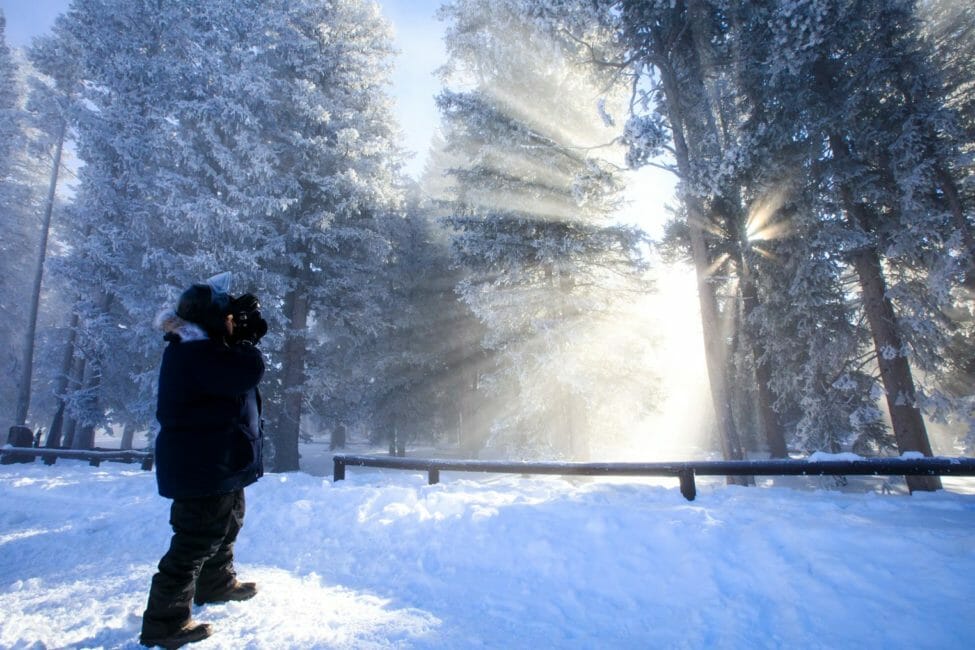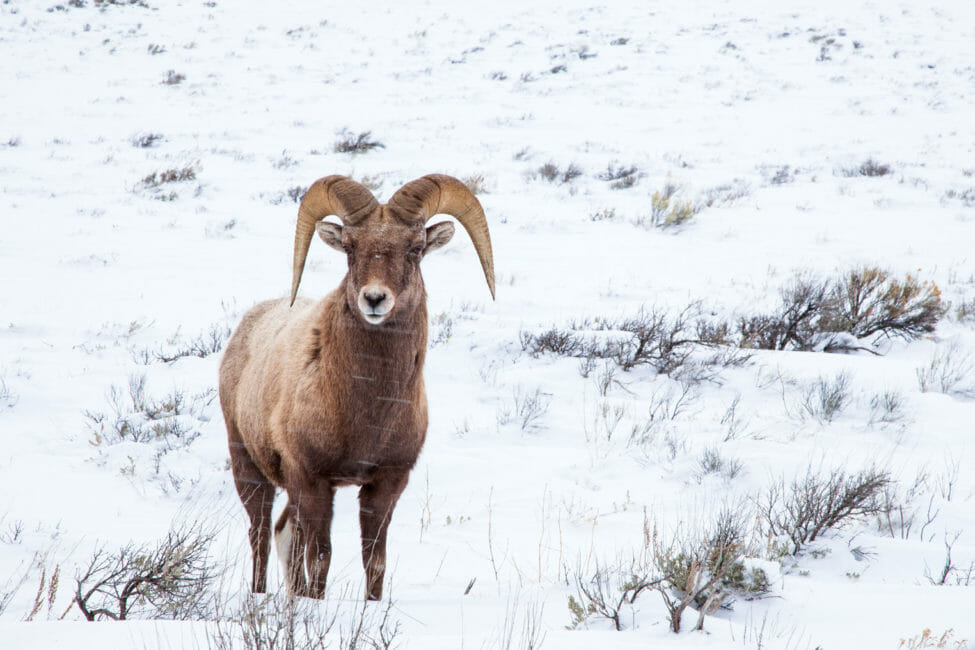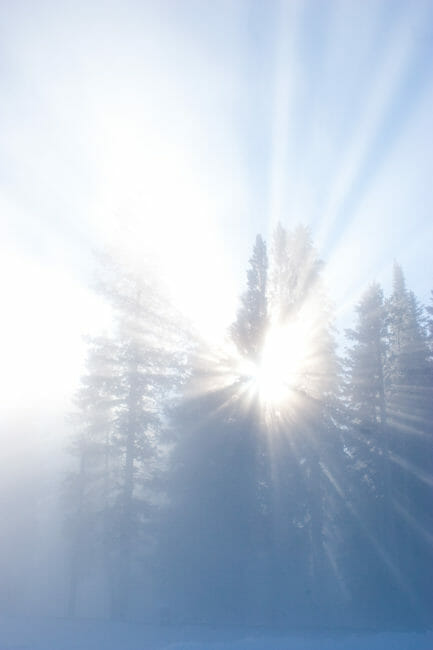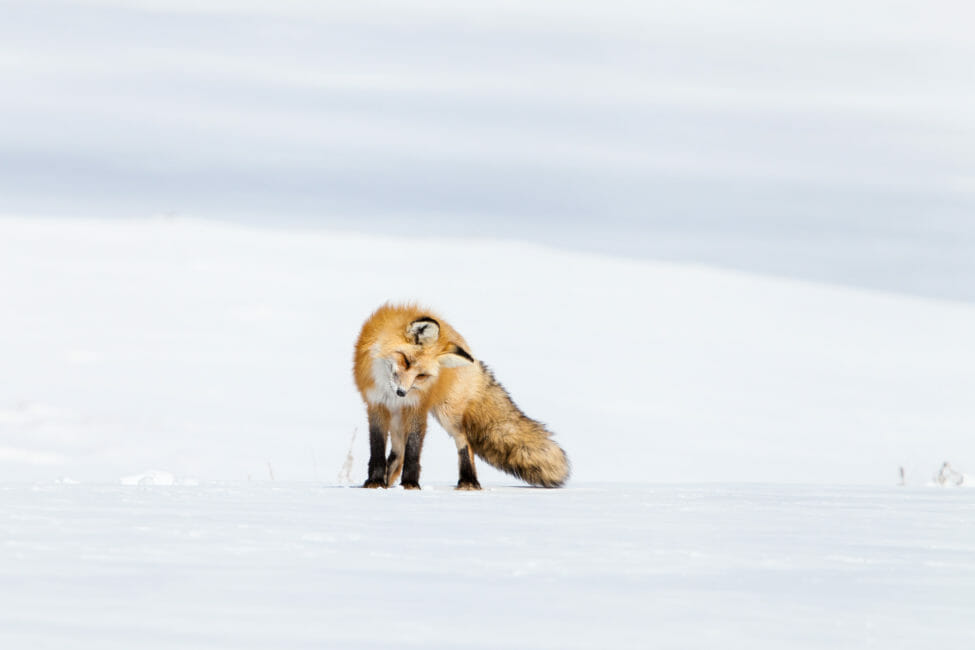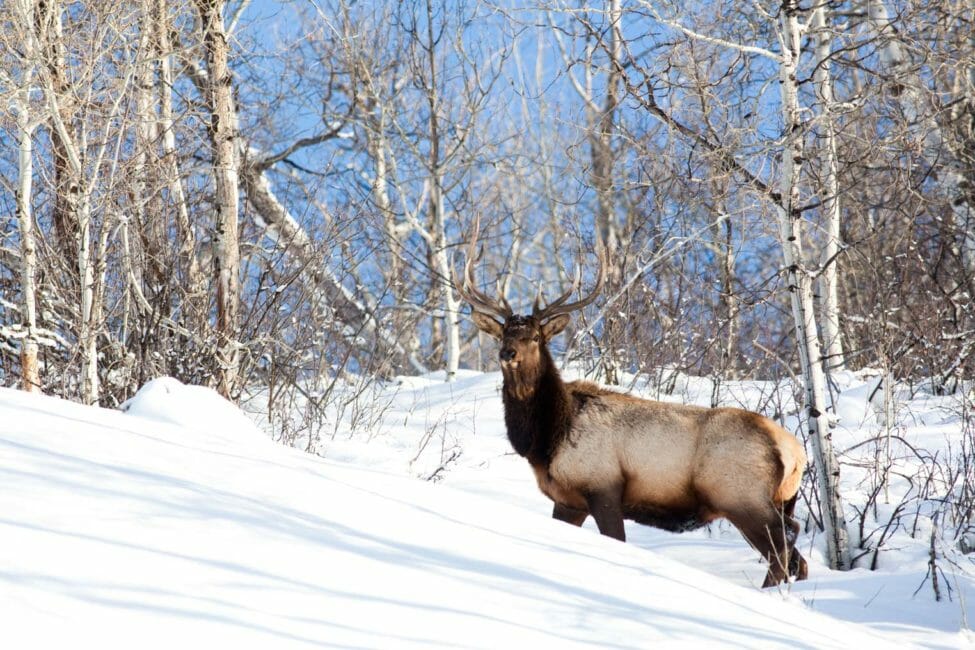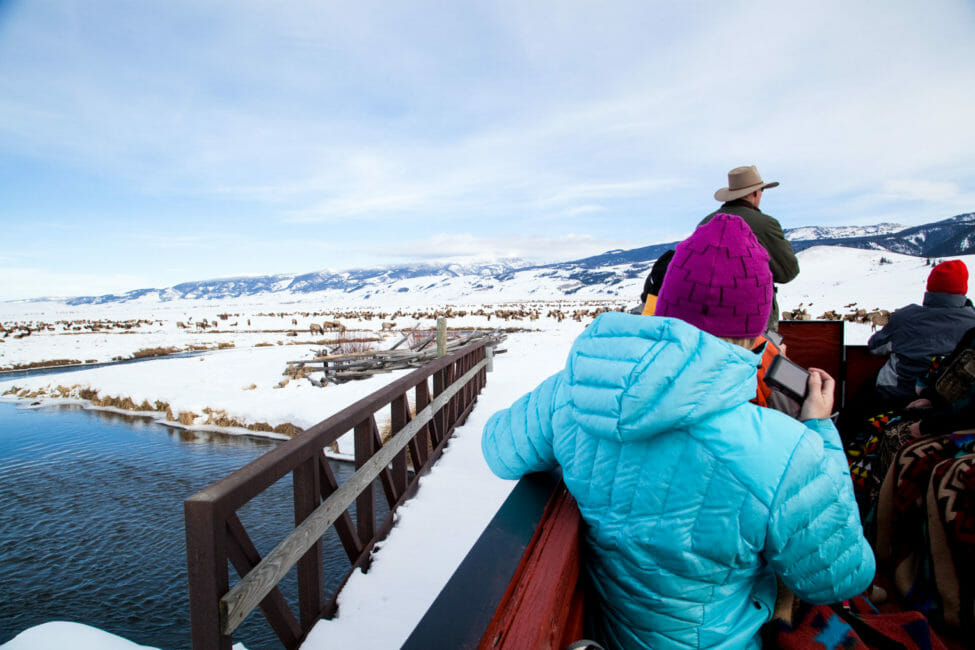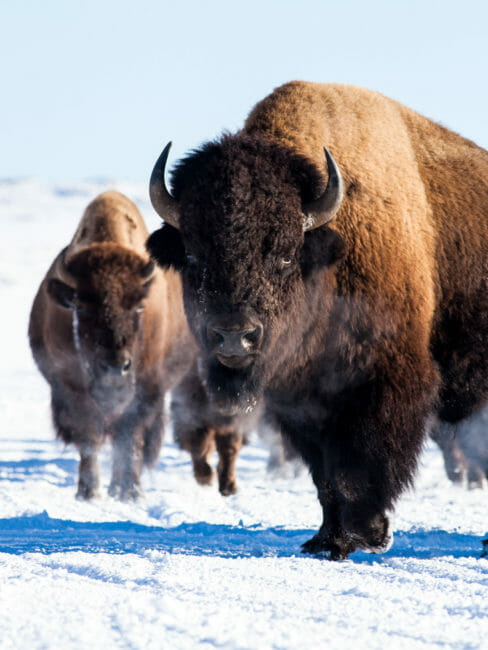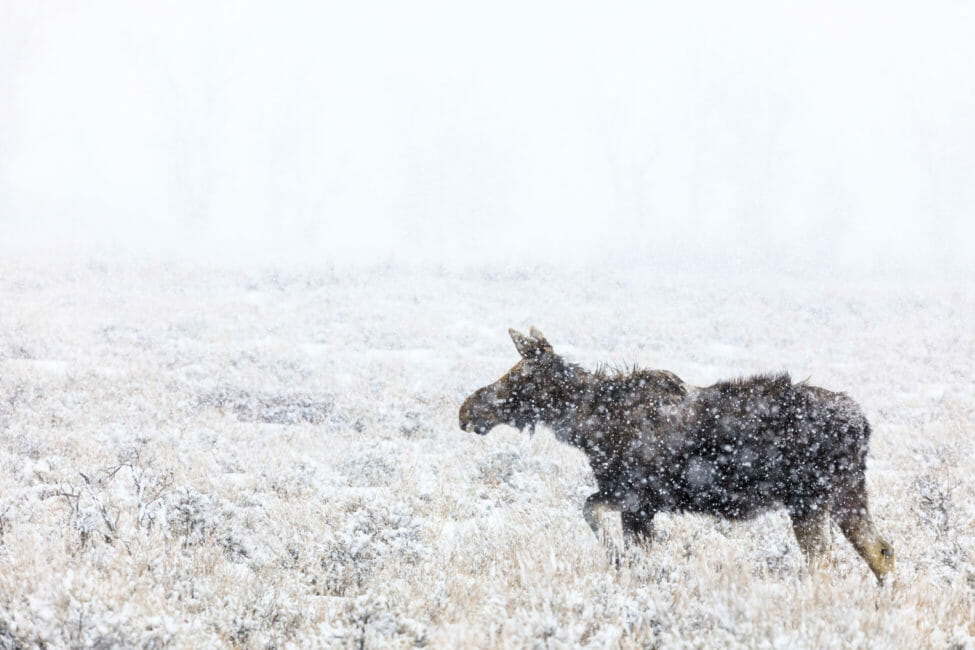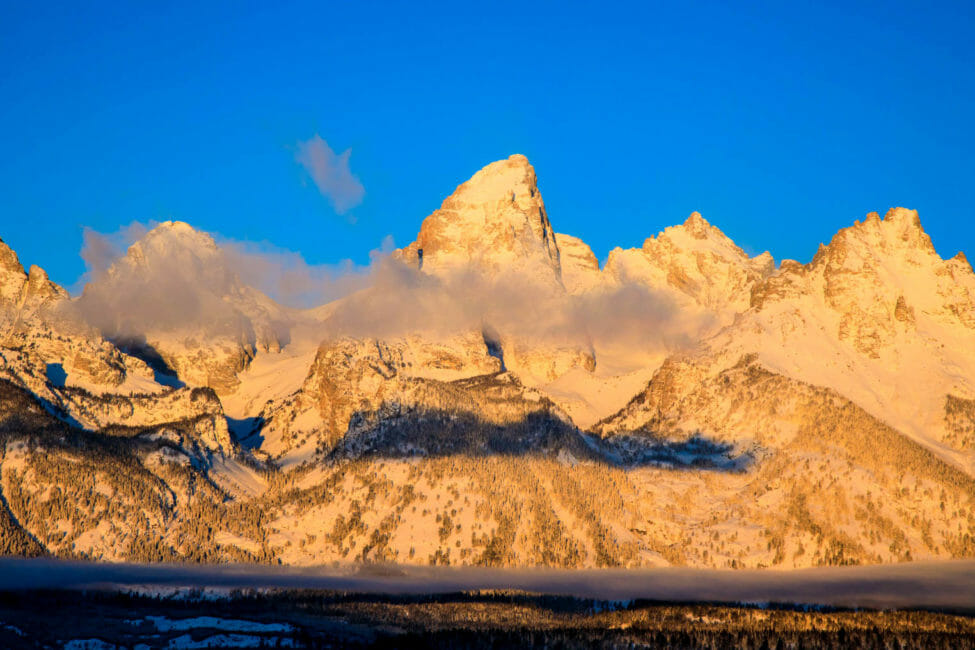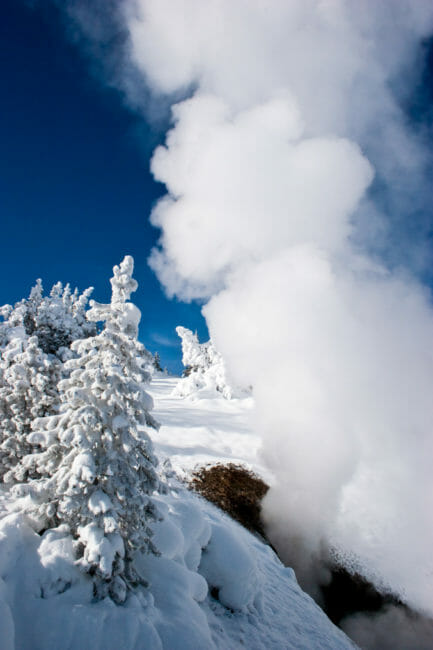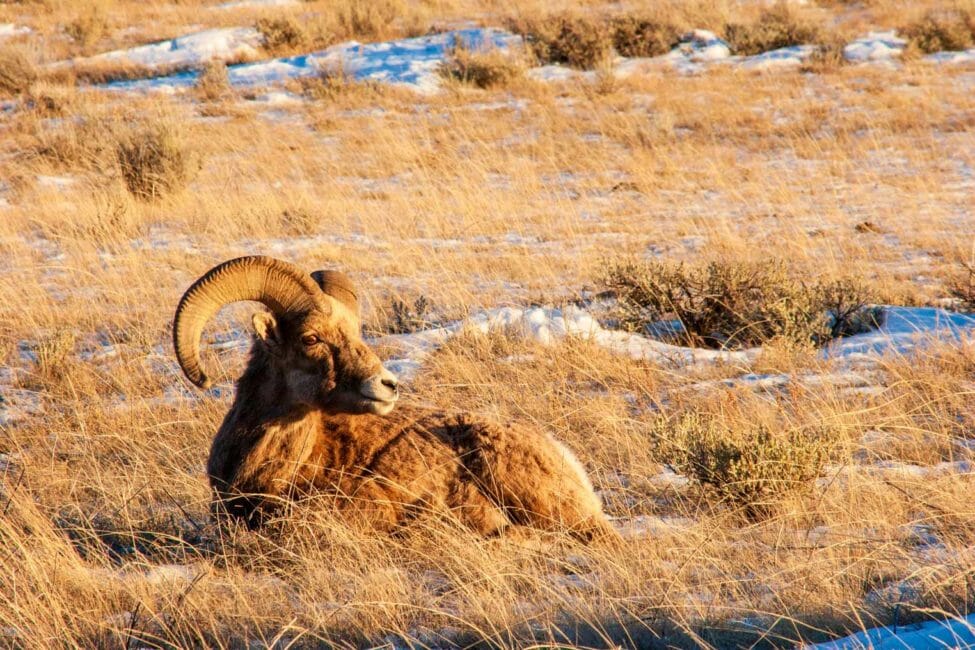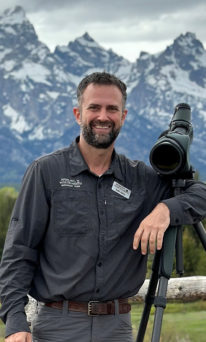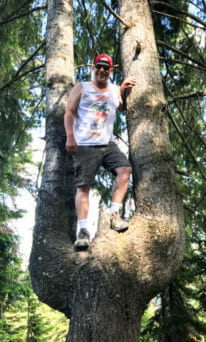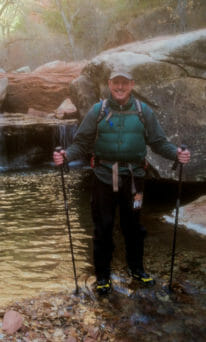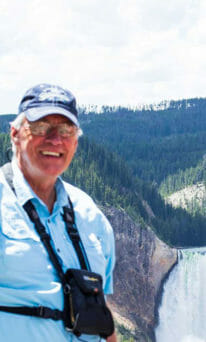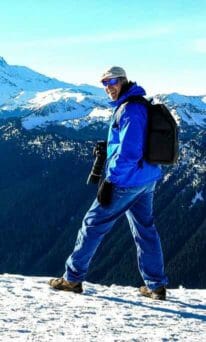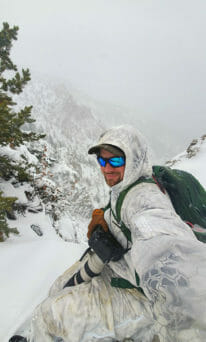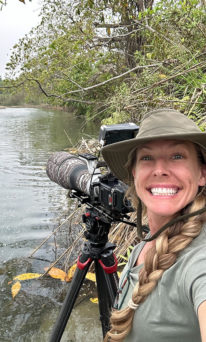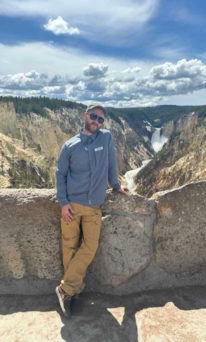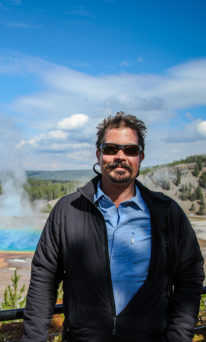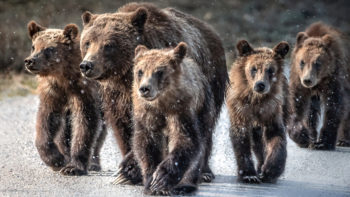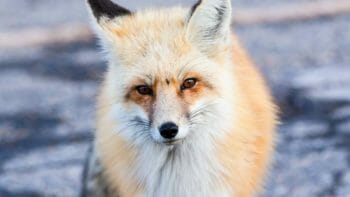Overview
This winter, explore the beauty of the Greater Yellowstone Ecosystem that extends beyond the reach of Jackson Hole. Immerse yourself in the natural world where you not only see the wild beauty, but you’ll feel the invigorating frosty air fill your lungs and you’ll smell the piney incense of subalpine firs. On top of enjoying a voyage through some of the most beautiful landscapes the west has to offer, you will view wildlife track and sign as well as be on the lookout for a variety of amazing animals native to Yellowstone National Park, and you’ll learn about their unique ecological roles in the region.
Highlights
- Winter Access to Yellowstone National Park
- Family-Friendly Snowshoe Options
- Wilderness, Wildlife, & Winter Solitude
Choose a low-impact adventure – great for families, kids, beginners, novices, or anyone wanting an easy pace. We will travel 2.5 hrs, by vehicle, through eastern Idaho before accessing Yellowstone National Park through the West Entrance. We’ll spend the morning on snowshoes before returning to West Yellowstone for a late lunch. After lunch, we’ll head to the Wolf and Grizzly Discovery Center where you will experience the majesty of grizzly bears, gray wolves, river otters, and more before heading back to Jackson Hole.
If you would like a more rigorous experience, we can extend our time in the field and explore more by snowshoe.
This tour is van-based with the majority of time spent in the field on snowshoes. Please come prepared for a variety of conditions and terrain.
Jackson Hole is an amazing place to visit during the winter. Scenery and wildlife are abundant, as well as – to the pleasure of the avid skier- snow. While most venture into this picturesque valley between the months of December through March with the plans of hitting the world-class slopes at a ski resort, there is so much more the region has to offer. There is the iconic Grand Teton National Park to explore, as well as the National Elk Refuge which abuts the northern edge of the town of Jackson, WY. But why limit your visit to the geographic valley alone? Jackson Hole Wildlife Safaris wants to help you expand your boundaries with a full-day snowshoeing and wildlife adventure! This tour will provide you with snowshoes, trekking poles, and a highly experienced guide who will lead you through the wonders of the Greater Yellowstone Ecosystem during winter.
West Yellowstone Snowshoe & Wildlife Adventure
Jackson Hole Wildlife Safaris will pick you up at your place of lodging in the morning (around Jackson, Teton Village, WY or Victor or Driggs, ID) and begin the 2.5-hour scenic drive from Jackson to West Yellowstone. The first leg of our journey takes us over the Teton Pass which lies just West of Jackson, WY. This route will take you to an elevation of 8,432 ft above sea level, and at the summit allows observers to witness the sprawling valley below, the rolling foothills and alpine peaks of the Gros Ventre Mountain Range, and the Snake River winding below. There will be hillsides laden with endless snow-flocked evergreens to admire, along with the potential to spot moose and deer along the drive into Idaho. Passing through Victor and Driggs, ID provides the opportunity to see the wonderful western face of the Teton Range. Beyond that is Island Park, ID (fun fact: is home to the longest main street in America) where evidence of past volcanism originating from the Yellowstone hotspot begins to reveal itself.
Upon arriving in West Yellowstone, MT there won’t be much farther to go before arriving at the trailhead to start the wintry adventure into Yellowstone National Park. The snowshoes Jackson Hole Wildlife Safaris will provide aid in keeping you from sinking too deep into the snow when trekking over embankments that could be multiple feet in depth. This enables multiple miles of travel into this winter wonderland where you are immersed in the peaceful solitude of Yellowstone. Be prepared to learn about the complexities of the Greater Yellowstone Ecosystem, the history of preservation within the park, and a chance to spot elusive wildlife like bobcats, American martens, ermine, snowshoe hares, and a wonderful variety of songbirds. Even if wildlife is not actively tromping around the trail, the snowy landscape is a perfect canvas upon which tracks and signs are apparent. Your expert guide will be eagerly seeking out such evidence of wildlife activity and delighted to interpret all that might be spotted along the journey.
The rest of the afternoon will be dedicated to observing some of the most elusive wildlife in this ecosystem. Winter might not be the season to expect to see Grizzly bears in Yellowstone, but the Wolf and Grizzly Discovery Center makes the impossible happen! The discovery center hosts multiple grizzly bears (one is actually an Alaskan Coastal Grizzly) which were brought to the establishment as nuisance or orphaned bears that would have otherwise been euthanized. These bears are active year-round being fed and roaming around their enclosure on a daily basis. The gray wolf is another tantalizing native Yellowstone species that can be observed at the discovery center. Two different wolf packs live at this educational facility, they will often be lounging, playing, and feeding around their enclosures- providing ample opportunities to observe these animals interacting on a nearby basis. A recent addition to the Wolf and Grizzly Discovery Center is the River Otter exhibit. River otters can be challenging to find in the wilderness of Yellowstone but are always captivating to watch due to their playful antics. Other animals that can be seen at the center include birds of prey, fish, and a selection of native amphibian and reptilian species.
Join one of our expert guides and let Jackson Hole Wildlife Safaris lead you through a one-of-a-kind educational and extraordinary experience in Yellowstone National Park!
What's Included
-
Hotel pickup
-
Professional naturalist guide
-
Private safari
-
Light breakfast
-
Assorted snack basket
-
Hot and cold beverages
-
Use of UHD binoculars and spotting scopes
-
Use of snowshoes and poles
-
Entrance to the Wolf and Grizzly Discovery Center
-
Guide gratuities
-
National Park entrance fees
Private Safari
Pick-up Times
All guests are picked up and returned to their place of lodging. We pick up at hotels and condos Jackson, Wilson/Aspens, Teton Village, Victor ID, Driggs ID, Ashton ID, Island Park ID and West Yellowstone MT. Your exact pickup time will be determined by your hotel location and the season. Please make note of your pickup time, and save it for your reference.
Please be ready and waiting in the hotel lobby a few minutes before your pickup. Please allow an additional 5-10 minutes for your guide to arrive just in case they are delayed for any reason.
Changes to trip timing may be made to accommodate daylight and/or optimum wildlife viewing.
Approximate pickup times include:
December 15 – March 15
- 7:00 AM Jackson/Wilson/Aspens/Teton Village
- 7:30 AM Victor, ID
- 7:45 AM Driggs, ID
- 8:45 AM Ashton, ID
- 9:00 AM Island Park, ID
- 9:30 AM West Yellowstone, MT
Safari Tour Gallery
All photography has been shot by our talented tour guides.
FAQs
Can I still participate in a Yellowstone Snowshoe Tour if I have never snowshoed before?
Snowshoeing is an experience that is for everyone. But, even for those not familiar with snow related activities, putting on a pair of snowshoes to trek through a winter wonderland is fundamentally simple. One of the greatest challenges is the physical aspect. With the added weight of snowshoes on your feet, the quads and hip flexors are exposed to a greater strain than usual. Then there is the coordination; snowshoes are wider than any normal shoe, resembling baskets attached to your winter boots. This will require you to take broader steps as to not trip on your own shoes. Fortunately, slipping and sliding is typically not a concern. Unlike skis, which are built to slide along any downhill terrain, snowshoes are equipped with crampons (metal spikes on the bottom of the shoe) which increase traction in even the iciest conditions. Jackson Hole Wildlife Safaris snowshoe trips are private adventures, which means you will have plenty of one on one time with your guide to grasp the snowshoeing process and go at your own pace without feeling rushed. With a Wilderness First Aid certification, Avalanche Awareness Training and first hand experience with snowshoeing, your guide will be prepared to make this experience enjoyable while minimizing risk, even if you are a beginner.
What should we wear for snowshoeing in Yellowstone National Park?
Snowshoeing, regardless of the intensity, often results in the body heating up dramatically while moving even in below freezing conditions, and rapid cooling when stopping for a break (or lunch in the case of the longer trek from the south entrance of Yellowstone). This is why layers are vital when participating in any outdoor recreation in the winters of the northwest. While exerting yourself, it is perfect to be able to strip down to a thin synthetic or wool blend top layer that will provide a light layer of protection from the chill. Cotton clothing is not recommended as it does not keep you warm once it is damp from sweat or snow. When stationary, a warm fleece layer and/or puffy insulated jacket is heavenly to stay warm as your body cools down from exerting itself. No matter the distance traveled, always pack a waterproof jacket and pair of pants. This could be a jacket worn for skiing, or simply a rain coat as long as the proper insulating layers are worn underneath it. Look for one with a hood so if it’s a blizzard-y day you can keep snow off your head. Snow pants (or ski pants) are one of the best shell layers for snowshoeing. Usually snow pants are insulated, and it’s always a good idea to wear a base layer of long underwear that is a synthetic or wool blend. If looking to invest in your first pair of snow pants, consider a pair with vents that can be unzipped in order to allow for your legs to cool off if you do get overheated. Gaiters are something to consider if you’re worried about snow getting into your shoes, which would result in cold, wet feet and discomfort. Speaking of shoes, waterproof and insulated is essential. Regardless of the brand and fit that is best for you, boots that go above the ankle are usually best. This helps keep the snow out! Other accessories to consider are a pair of waterproof, insulated gloves; a warm hat (that you might end up removing if you get too warm!) and a scarf or neck gaiter to keep wind and snow off your neck and face. Jackson Hole Wildlife Safaris will provide lunch and snacks for your excursion, but you should bring plenty of water as well as any preferred snacks. 32oz should be enough fluids for the shorter snowshoe trip from West Yellowstone, but for the longer trek via the South Entrance do not hesitate to pack as much as 64oz to be safe.
What part of Yellowstone National Park will we see?
Yellowstone National Park has five different entrances total, and one of the closest ones to Jackson Hole is the West Entrance.
The West Entrance trail system offers snowshoeing opportunities of shorter, less strenuous distances. One option takes you through the west gate and out to the embankments of the Madison River. The secondary option will not take you through a traditional entrance station, instead you will start from the Bighorn Pass Trail in which immediately, the rushing waters of the Gallatin River will be there to greet you. Both are relatively level out-and-back trails which will provide beautiful views of the Gallatin Mountains and snow flocked forests.
Will we see winter wildlife in Yellowstone National Park?
Aside from experiencing unadulterated wilderness and immersing oneself in the peace and beauty of the natural world, Yellowstone National Park also offers the opportunity to observe a wonderful spectrum of wildlife. Might wildlife sightings be expected on a snowshoeing excursion? This is always a possibility! Even in the depths of winter a variety of species remain active. Amongst forested terrain the elusive ermine, pine marten, bobcat, fox and even the incredible gray wolf could be roaming, typically on the search for food to sustain themselves during this arduous season. Near waterways like the Gallatin, Madison and Snake Rivers there is a chance to spot river otters, muskrats, beavers and even moose! Our experienced guides will also be able to point out some of the smaller, feathered wildlife species that remain active year round. This could include songbirds such as the lovely waxwings, pine siskins, finches, American dippers and shrikes, but also larger avians like bald eagles and owls. Even if animals are not actively being seen, their tracks and signs should still be apparent, especially as they move through an impressionable substrate like snow!
Do I need to be in good physical condition to snowshoe on this tour?
Most snow oriented activities provide a satisfying degree of physical challenge. When it comes to snowshoeing, if the trails are packed down and there hasn’t been much snowfall recently, the trek is usually not much more difficult than a moderately strenuous hike. Cutting through deeper snowbanks, for which you will luckily have a guide to break the trail, is where things can get more taxing for the quads and hip flexors.
If longer, strenuous hikes are not your thing, and you would rather enjoy a shorter, more leisurely trip, or you have children, then we’ll spend some time in the field, and then explore the Grizzly Wolf and Discovery Center. This route overall provides the option of going no more than 2 miles round trip before returning to the vehicle and enjoying the rest of the afternoon in West Yellowstone, MT before heading back to Jackson Hole.
If you’ve got a penchant for adventure, regularly engage in endurance sports, and the idea of a full day of snowshoeing into the park sounds like your cup of tea, then consider adding some time in the field for a longer day on snowshoes. You can skip the discover center and spend the day in the great outdoors.
Guides and Staff
Our Team
Local, experienced, and passionate guides and photographers.
Further Reading
A Handy Guide to Yellowstone in the Winter
January 20, 2020
Yellowstone is undoubtedly one of the most beautiful National Parks in the country. With unparalleled views of geysers, hot springs and meadowlands, it’s hard to pass up an opportunity to visit this gorgeous National Park. While most tourists visit Yellowstone in the summer, it’s the wintertime where the stillness, amazement and beauty of nature really shines.
5 Winter Photography Tips: Dealing with Three Exposures
December 28, 2016
Winter is a time of paradoxes and extremes; landscapes covered in clean white snow are most beautiful; temperatures range from above freezing to well below zero, animals are wearing their finest winter furs, some animals are losing their adornments (antlers) and many scenes you will have alone as most folks are nestled comfortably in front of the fireplace. Capturing this winter beauty is an exercise of extremes. We must deal with three primary exposures; skin, camera and photographic.


